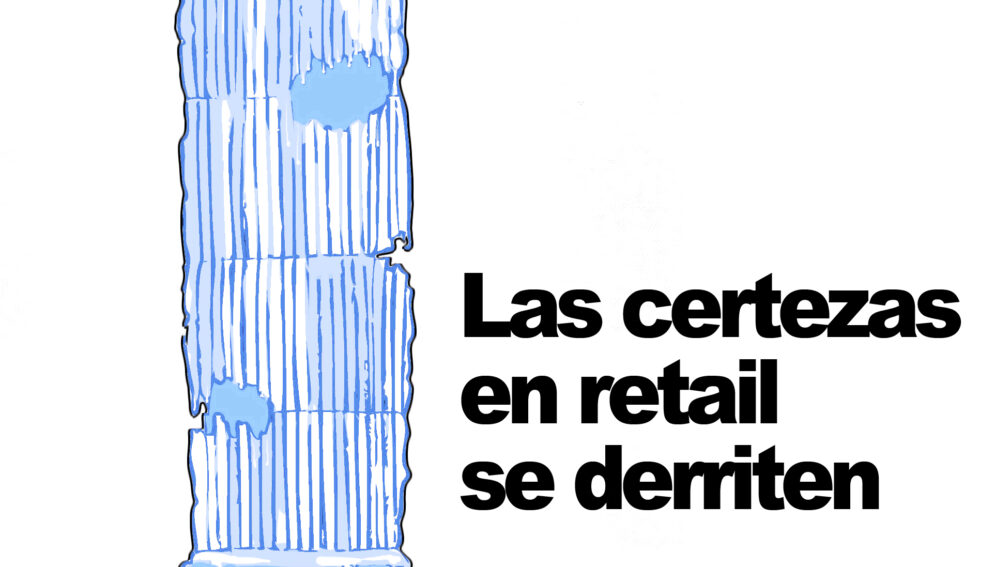The alarm bell was struck by the BBC, The Guardian and even The New York Times. Many of the retail chains that boast shops in the hight street have seen their sales drop. This has led companies to close down their points of sale, sell their shares or still more, go bankrupt.
Being big is no longer a key to success in retailing. The location either, even if it has been traditionally defended as a core issue. In fact, many shops from large chains located in main streets have lost sales and profits. Today, traditional paradigms are falling to pieces.
Possible causes
Six factors come forth when investigating the situation:
- The uncertainty as regards to the future puts off customers from shopping. This is mainly reflected in home products, such as furniture.
- The competition of two sale formats: on one hand, the internet stores (about which a blogger remarks: “the street shops are like web showrooms. You first go window shopping and then buy online”). On the other hand, the large “supermarkets”, those typical superstores that expand their non-food product portfolio at rock bottom prices.
- Many commercial streets aren’t practical: it’s difficult to park, the opening hours are unsuitable, etc.
- In nearly every street one can find the same chains. And this phenomenon extends to most commercial centres and cities. In France they call this “Londonisation”, whereas the British New Economics Foundation (NEF) states that 41% of the city centres are cloned (“Clone Town”). (1)
- Most of the affected chains have something in common: little differentiation and no “soul”. It doesn’t matter if they are discount chains: low prices no longer guarantee success in times of crisis.
- There is a new trend arising amongst consumers in several countries, including Spain: a warmer feeling towards local shops and companies. The gigantic and excessive size of some chains seems to overwhelm clients, as it already happened some time ago with Migros in Switzerland.
Although these symptoms have a certain degree of impact on everyone and everywhere, there are cities like New York or shops -both big and small- that are still performing well. It is indeed moving to read how the British praise John Lewis, whose format (department store) is not in itself particularly original. Many customers claim their great shopping experience is due to the fact that the employees are also the company shareholders.
And what can the chains do?
Become inspired. Here are six thoughts that could help in the process:
- Right prices for good products are not enough. The shop must provide a positive vibe to customers, not only when they buy or consume, but also throughout their life. Every day more shops and chains target this: Luta for sportswear (luta.co.uk), Dayles Ford organic for organic food (daylesfordorganic.com), the Southafrican brand Earth Child for environmentally-friendly clothing (earthchild.co.za), or the American Giggle for parenthood products (giggle.com).
- In times of crisis, the price is important, but values also count. Those brands which are based in authenticity, ethics or empathy, will certainly connect better emotionally or personally with their customers. The germ of such a realization is the new proposal launched by Eroski: “Contigo” (“With you” in English).
- The Corporate Visual Identity (CVI) handbooks should be reviewed, as now “modern” is not a synonym for “the comfortable uniformity of all stores”. Modern now means merging in a neighborhood as a vital part of it, without loosing the original DNA of the brand-chain. This balance could be called “IVC 2.0” or “Flexicorporate Visual Identity”, and would certainly require professionals to adapt their sensitivity to the customers of each area, rather than to the predefined headquarters’ “comfort-zone”. This strategy is indeed more complicated, but also more empathic. Some years ago, Esade launched a Flexi-Logo for the Marketing Management department. It consisted of the Esade logo, the department logo and an area where every professor could place his or her own photo. Now more than ever, purism and uniformity are a thing of the past.
- The size in retail, although important, is no longer a recipe for success. However, we should differentiate two aspects. Firstly, the size of the shop has to be the one which properly conveys a meaningful purchasing experience. If it is too small, it isn’t playing the right music for people to hum its tune. Secondly, the size of the chain. It is inevitable that companies shall continue growing in order to become competitive, but they should also take steps to avoid being perceived as arrogant. Economies of scale are still vital.
- Shops should offer customers several integrated purchasing methods: the store itself, smartphones, webs, etc. (2)
- Costs may increase because adapting shops to each area and implementing a multi-sales method are an added-complexity. To avoid this risk, however, it is important to pay attention to the “economy of scope”, by which the company achieves more versatility with less elements. In the car industry, a manufacturer can produce different car models with very few components.
What habitats can contribute to
The commercial habitats could also consider several practical decisions for its shopping streets or areas:
- The main ingredient to a shopping experience is the ease with which customers can perform this activity, thus minimizing their efforts. By way of example, the schedules: shops should open when customers are prone to buy what is sold there.
- The commercial areas should provide its customers with a clear meaning, which becomes its main axis. They must express it with authenticity, personality, determination and charm. There are great opportunities for locations that implement this premise, such as the Boquería market in Barcelona, the San Miguel market in Madrid or the Borough Market in London, among others.
When the shop is small, the area is relevant. In the Medieval Ages, the offer concentration attracted demand.
References:
- www.neweconomics.org—clone-town-britain
- See the previous bubble. “Puentes de autopista, de lianas o pasarelas. El sentido del ‘multicanalismo’ en retail” (in English: “Highways, lianas or footbridges. The meaning of ‘multichannel‘ retailing”), in Código 84, nr. 159 (December 2011), p. 106-108.
_______________
Lluis Martinez-Ribes
Source: Código 84, (Burbujas de Oxígeno)




